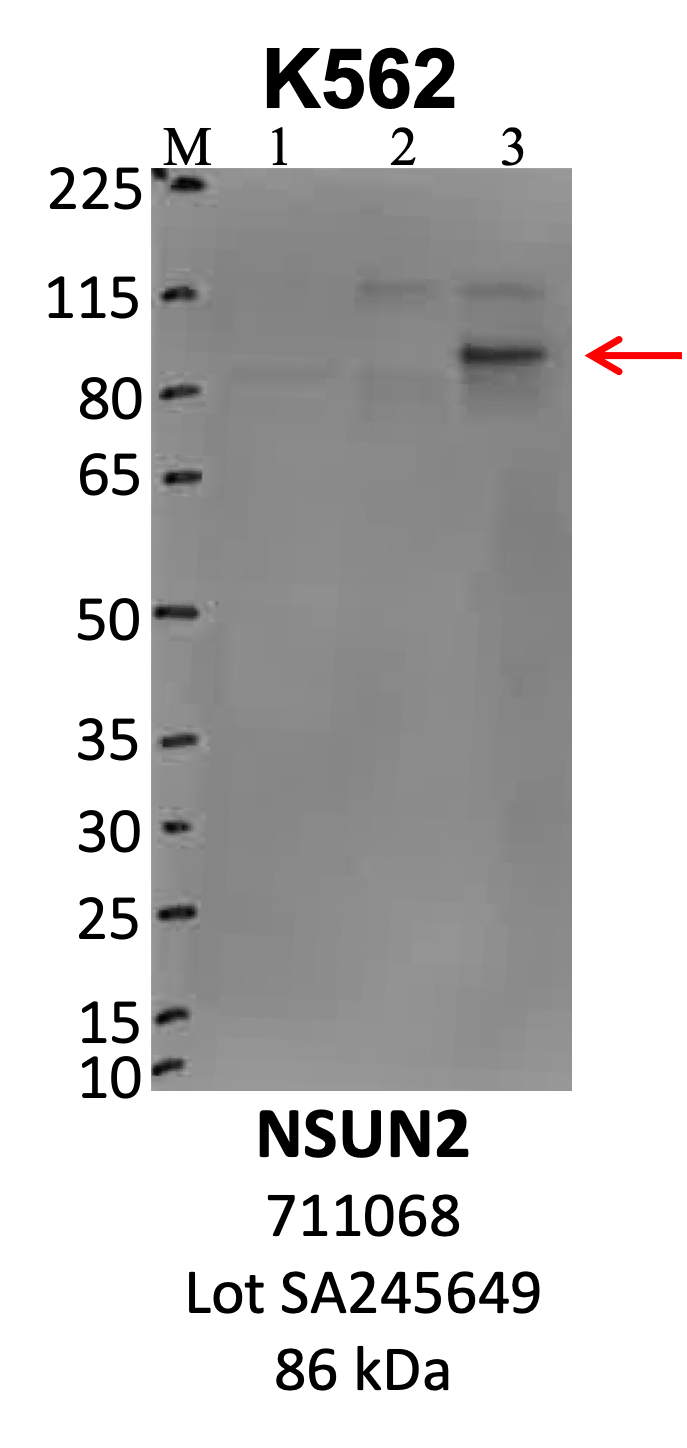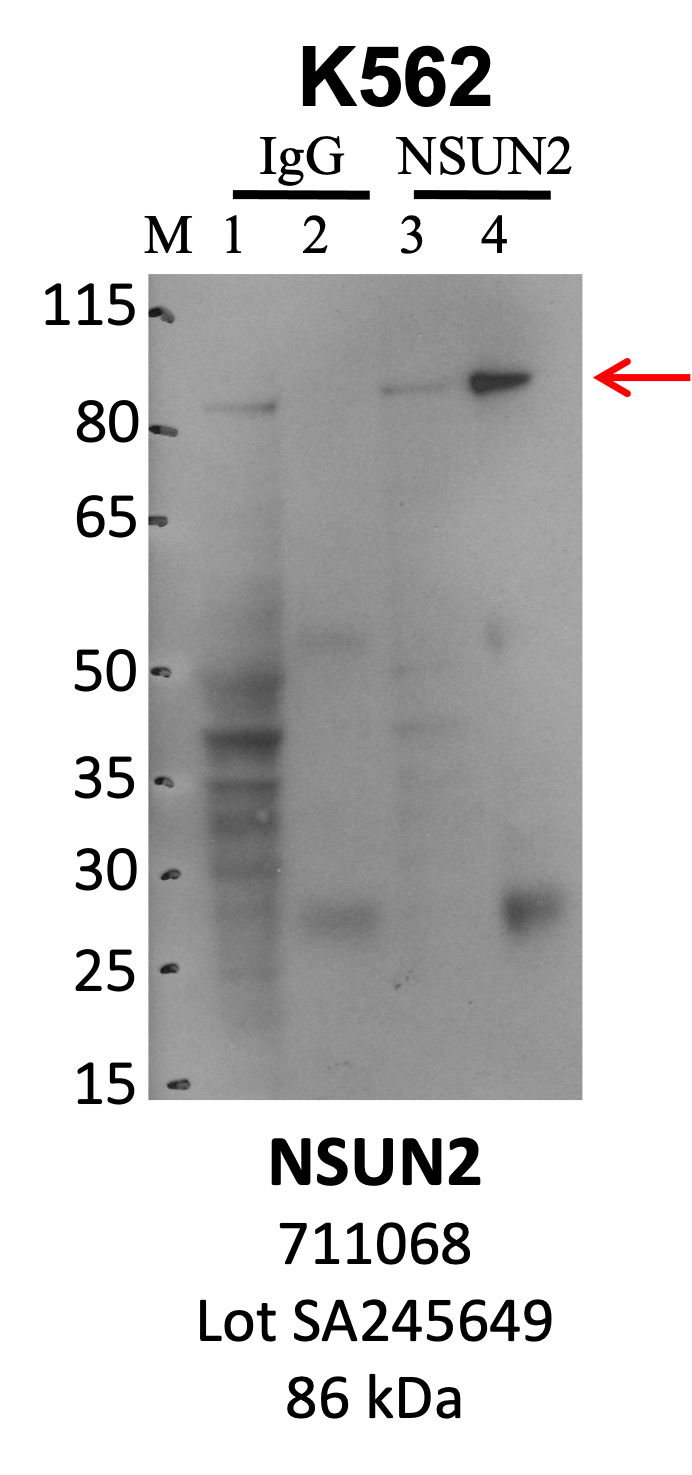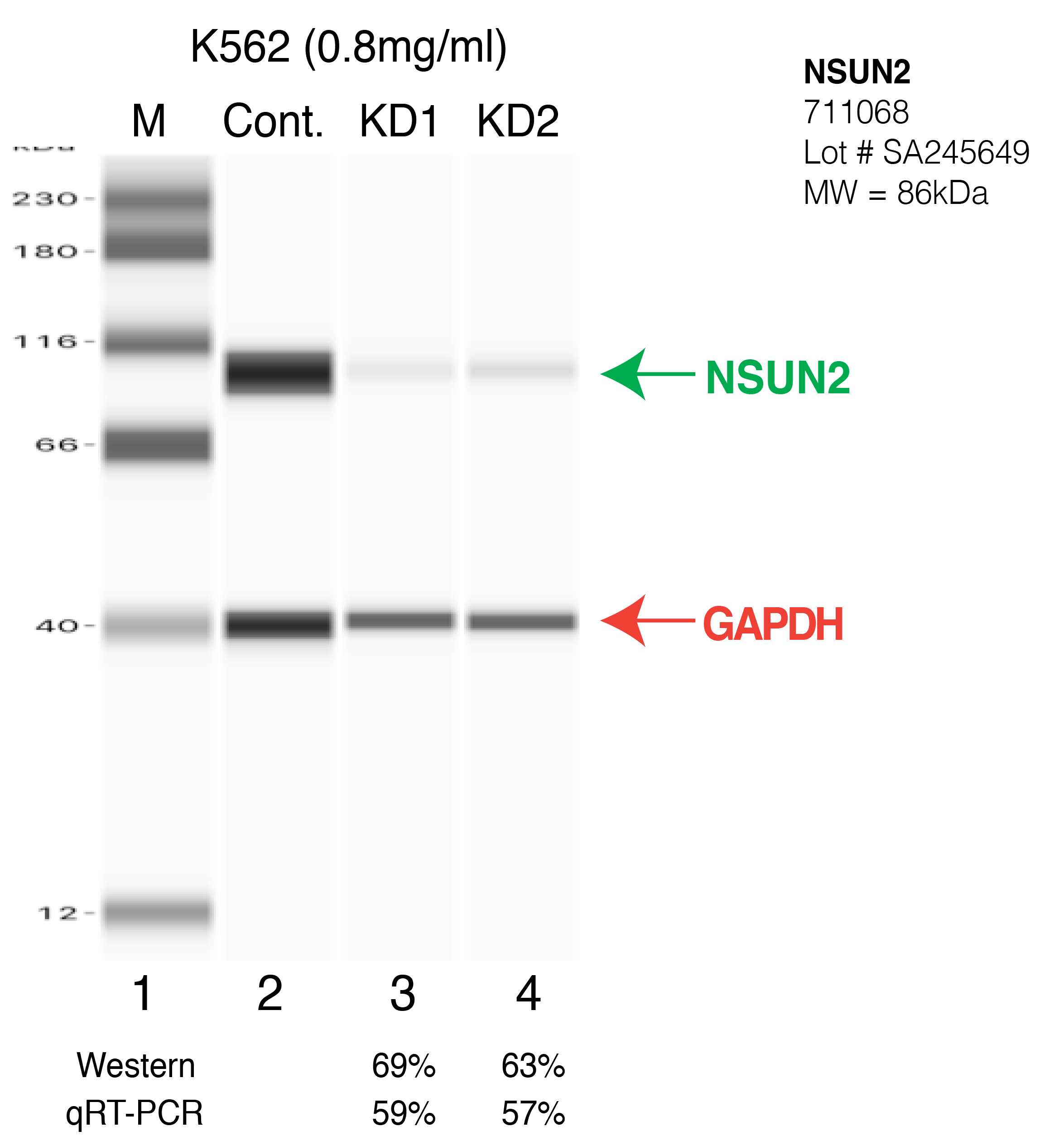| HepG2 | 
Caption: IP-WB analysis of HepG2 whole cell lysate using the NSUN2 specific antibody, 711068. Lanes 1 and 2 are 2.5% of five million whole cell lysate input and 50% of IP enrichment using a normal IgG antibody, respectively. Lane 3 is 50% of IP enrichment from five million whole cell lysate using the NSUN2-specific antibody, 711068. The same antibody was used to detect protein levels via Western blot. This antibody passes preliminary validation and will be further pursued for secondary validation. *NOTE* Protein sizes are taken from Genecards.org and are only estimates based on sequence. Actual protein size may differ based on protein characteristics and electrophoresis method used. Method: immunoprecipitation Releated Sample: eCLIP:4215 Status: Released Lab: Yeo Lab | |
|---|
| K562 | 
Caption: IP-WB analysis of K562 whole cell lysate using the NSUN2 specific antibody, 711068. Lanes 1 and 3 are 2.5% of five million whole cell lysate input. Lanes 2 and 4 are 50% of IP enrichment from five million whole cell lysate using normal IgG antibody and the NSUN2-specific antibody, 711068. The same antibody was used to detect protein levels via Western blot. This antibody passes preliminary validation and will be further pursued for secondary validation. *NOTE* Protein sizes are taken from Genecards.org and are only estimates based on sequence. Actual protein size may differ based on protein characteristics and electrophoresis method used. Comments: Bands at ~55 and ~28kDa in lanes 2 and 4 correspond to the heavy and light chains of the antibody used for the immunoprecipitation. Method: immunoprecipitation Releated Sample: eCLIP:452 Status: Released Lab: Yeo Lab | 
Caption: Western blot following shRNA against NSUN2 in K562 whole cell lysate using NSUN2 specific antibody. Lane 1 is a ladder, lane 2 is K562 non-targeting control knockdown, lane 3 and 4 are two different shRNA against NSUN2. NSUN2 protein appears as the green arrow, GAPDH serves as a control and appears in red arrow. Releated Sample: BGKLV34-25 Status: Released Lab: Graveley Lab |
|---|